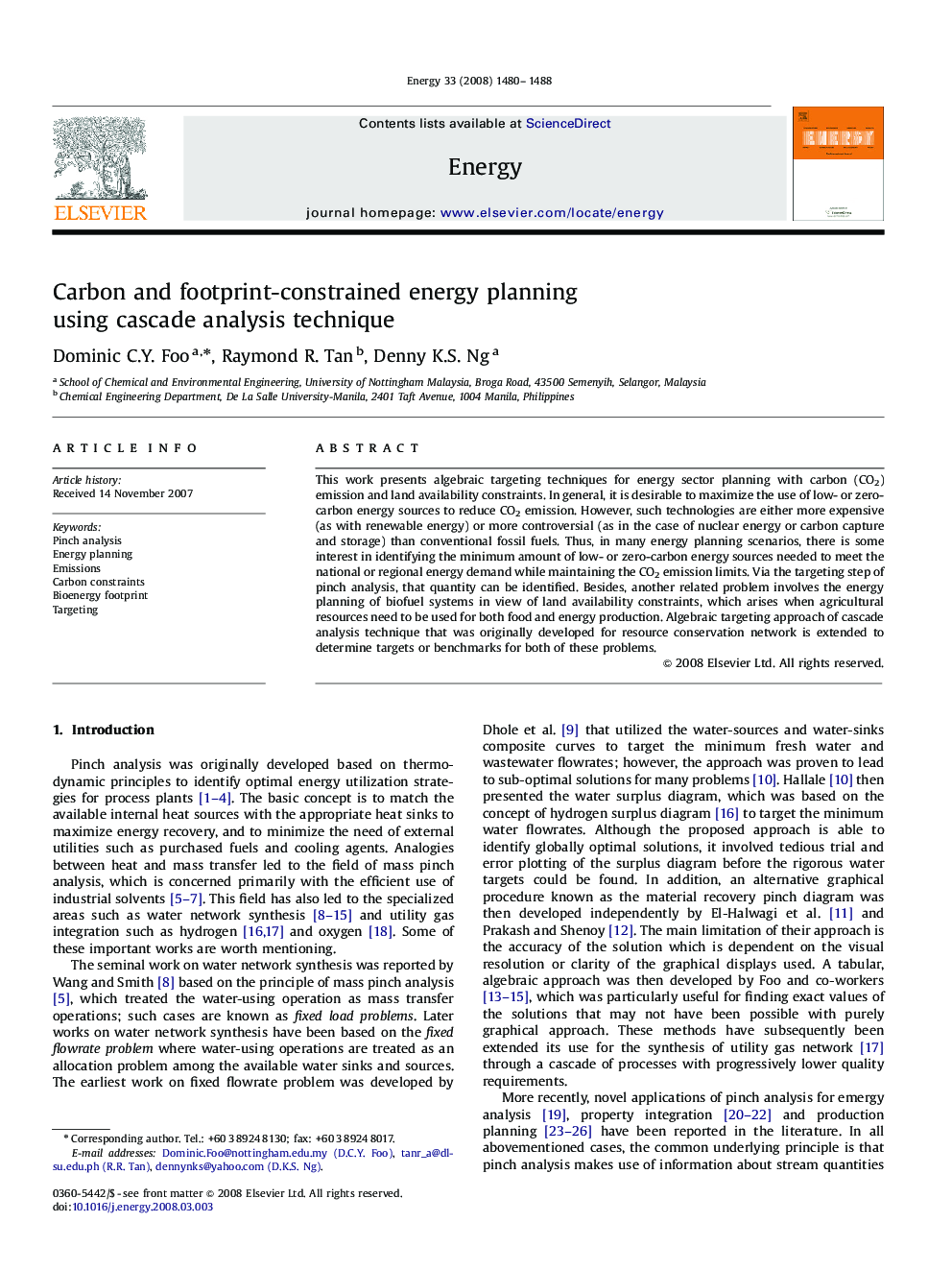| Article ID | Journal | Published Year | Pages | File Type |
|---|---|---|---|---|
| 1735246 | Energy | 2008 | 9 Pages |
This work presents algebraic targeting techniques for energy sector planning with carbon (CO2) emission and land availability constraints. In general, it is desirable to maximize the use of low- or zero-carbon energy sources to reduce CO2 emission. However, such technologies are either more expensive (as with renewable energy) or more controversial (as in the case of nuclear energy or carbon capture and storage) than conventional fossil fuels. Thus, in many energy planning scenarios, there is some interest in identifying the minimum amount of low- or zero-carbon energy sources needed to meet the national or regional energy demand while maintaining the CO2 emission limits. Via the targeting step of pinch analysis, that quantity can be identified. Besides, another related problem involves the energy planning of biofuel systems in view of land availability constraints, which arises when agricultural resources need to be used for both food and energy production. Algebraic targeting approach of cascade analysis technique that was originally developed for resource conservation network is extended to determine targets or benchmarks for both of these problems.
